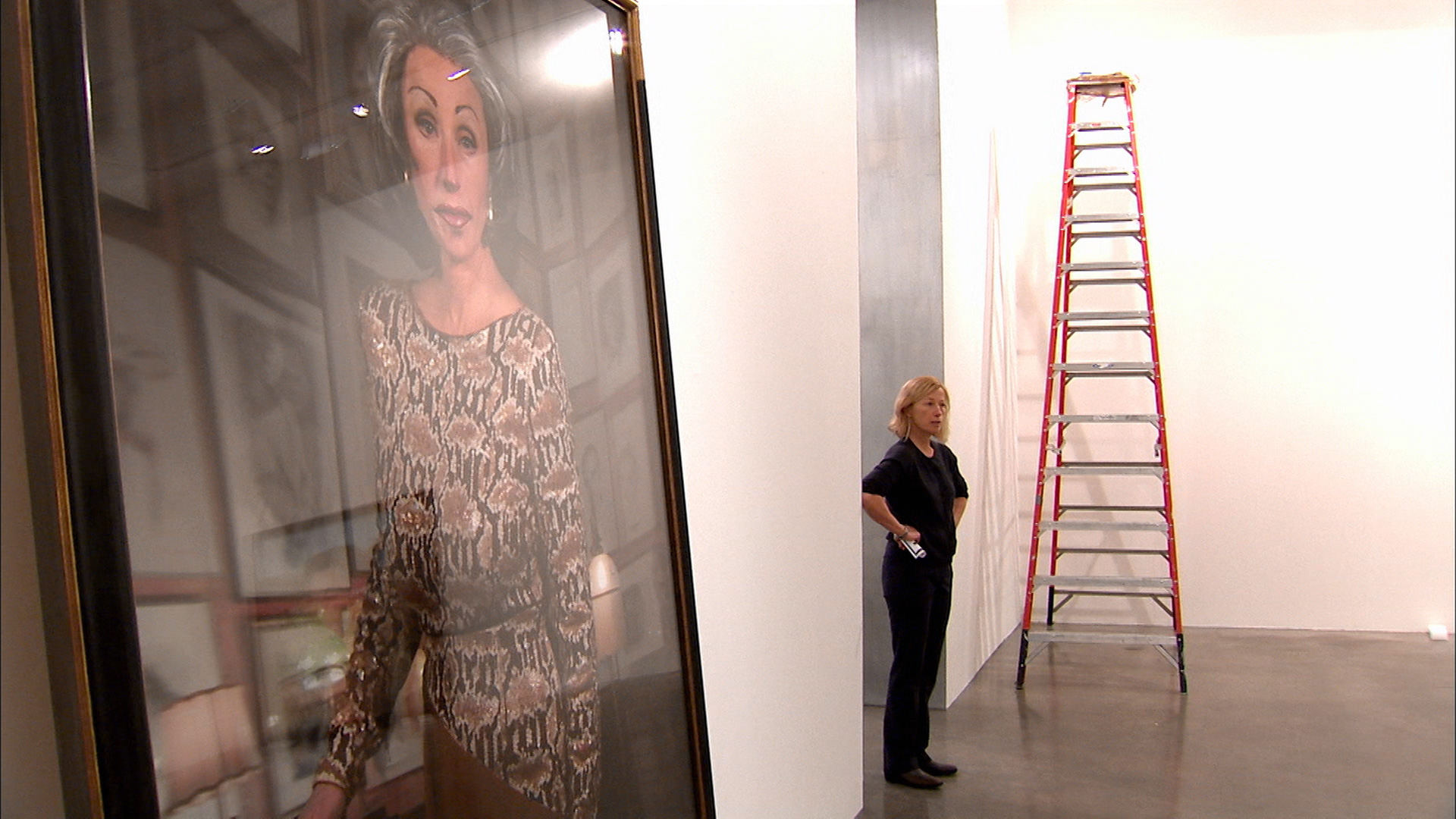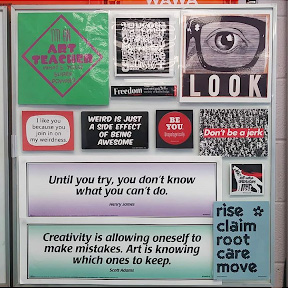
Richard Serra, installation view at Guggenheim Museum Bilbao, 1999. Production still from the Art in the Twenty-First Century Season 1 episode, Place. © Art21, Inc. 2001.
When I greet my students at the door at the beginning of art class, invariably a few eager voices will chime, “What are we doing today?” I’ll usually respond with something like, “Come in and find out!” or “Making art, of course!” But those answers are too simple. They don’t ask, “What are we making today?” If they did, the answer would likely be: a drawing, a painting, a collage, a sculpture, or a print. That kind of question and answer would reflect the superficial expectations of the school’s curriculum and traditional ideas of what happens in the art room. The question, “What are we doing today?” suggests that anything might happen in the art room: the students cross the threshold into a room of possibility and open-ended questions and answers with a desire to activate that space.
In thinking of these semantics, I am reminded of Richard Serra’s Verb List Compilation: Actions to Relate to Oneself, Material, Place, and Process (1967–68). “To make” is not on the list. Serra delineates far more specific actions for how to experiment. Perhaps “to teach” and “to learn” are too general as well. What actions could I list that would answer my students’ question? From Serra’s list, I might steal these verbs that could apply to my role as teacher: to hook, to impress, to support, and to expand. To my learners, I’d recommend borrowing his action verbs: to collect, to dig, to join, to mix, and to continue. We can look at contemporary artists not merely to reproduce their imagery but also to examine how they act in the studio or in the world as models for how students can act like artists.
“Acting like an artist is more than just making art”
The framework “Studio Habits of Mind,” developed with teachers through Project Zero, of the Harvard Graduate School of Education, takes an active approach to art teaching and learning. It states that learners can act more like artists by using eight main mental habits: to observe, to envision, to express, to develop craft, to stretch and explore, to engage and persist, to reflect, and to understand the arts community. In my classroom, students and I expand upon those verbs: we analyze art and the world around us, we watch videos of artists and discuss how their experiences connect with ours, and my students research and plan their creative projects. We practice techniques, experiment with materials, share ideas, and collaborate. We fail, overcome challenges, critique, revise, and present our work. We build our own art community. However, all those verbs still mostly refer to how to make art. Acting like an artist is more than just making art. Artists curiously investigate problems, surprise viewers with new perspectives, and challenge existing structures. Artists help us listen to unheard voices, empathize with other points of view, and wonder about the mysteries and beauty of the world.

Cindy Sherman, installation view at Metro Pictures, 2008. Production still from the Art in the Twenty-First Century Season 5 episode, Transformation. © Art21, Inc. 2001.
“Hearing living artists speak firsthand about contemporary issues helps my students to begin to define their opinions”
One reason why I love to show videos of contemporary artists in the classroom is that my students often gravitate more to an artist’s words than to their artworks. Hearing living artists speak firsthand about contemporary issues helps my students to begin to define their opinions and create spaces where they fit into society. For example, they’ve been put at ease by the Art in the Twenty-First Century episode featuring Cindy Sherman, showing them that it’s okay to be weird, dress up, and experiment with how you show your identity. With access to our school’s drama props, my seventh graders created alter-ego self-portraits. Some became wizards, clowns, and cops while others used the opportunity to intensify their presence with a particular gaze. Sherman’s playfulness in her work process set the stage for the students to see themselves in new ways and feel that self-expression is fluid and ever changing. They made and altered photographs, like Sherman, but they also played, imagined, took risks, challenged expectations, shared, and performed.
The art room is a safe space to experiment not only with physical materials and aesthetics but also with opinions, roles, and personal expression. In the art room, we are not just making art but also becoming humans who can communicate, interact, think, feel, and have unique and valid perspectives. At the front of my room is a board on which I have posted cards with messages that sum up how I’d like students to act: be your weird self (but not a jerk), don’t be afraid to try, make mistakes, care about others, and claim your actions.
This year, I’m adding my own list of action verbs to this art-room message board. Richard Serra’s list served to inspire him in the studio when he wasn’t sure what to do. Art teachers and students could use similar prompts to remember to act like artists. When students ask me, “What are we doing today?” I can point them to these:
Listening
Contemplating
Believing
Empathizing
Examining
Inquiring
Questioning
Wondering
Imagining
Playing
Trusting
Choosing
Collaborating
Challenging
Creating
Loving
Becoming




